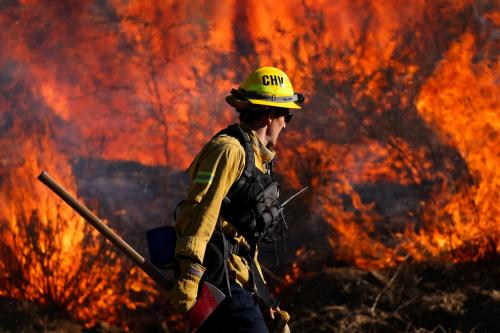After decades of civil war which ended with a negotiated peace agreement in 2005, South Sudan will be born as an independent nation on Saturday, 9 July 2011. The peace process has been long and troubled since the signing of the 2005 Comprehensive Peace Agreement (CPA) with uncertainties about outstanding final status issues such as oil revenues, debt, border demarcation, security and the status of Abyei, Southern Kordofan and Blue Nile states. Recent fighting in violation of this agreement in Abyei, an area which straddles the north and the south, has displaced an estimated 112,800 people, with northern troops occupying the region on May 21 and the UN Security Council ordering a 4,200-strong Ethiopian peacekeeping force into the region to monitor the troops’ withdrawal. [1] North-south fighting in Southern Kordofan since 5 June has exacerbated a volatile situation and an unknown number of civilians have been internally displaced. [2] These are important issues, indeed, but one additional challenge that has not received much attention is the issue of what will happen to the one million or so southerners living in the north who have not yet returned home.
Over the decades of conflict, large numbers of Sudanese moved from the south of the country to the north. In fact, probably ten percent of South Sudan’s population are living as internally displaced persons (IDPs) in the North. Many fled the violence in their communities. Others left rural areas in the south for northern cities primarily for economic reasons. About a year ago, between 1.5 and 2 million southerners were living in northern Sudan, most eking out an existence on the outskirts of Khartoum. Since the 2005 CPA, and particularly in the run-up to the January 2011 referendum, hundreds of thousands of displaced southerners returned from the north to the south. And reportedly hundreds of thousands more would like to return to their homes in the south. But going home is difficult.
Many southerners living in the north are ready to return home. They have sold their belongings but have been unable to find transportation home. Some have been unable to travel to the south because of the fighting. But perhaps the major deterrent to returns is the dismal lack of infrastructure in the south; the lack of schools, health facilities, electricity, public services, roads, legal systems, etc. is striking.
The southerners who remain in the north after Saturday’s independence face an uncertain future. The government of Sudan’s President Omar al-Bashir has asserted that they will no longer be considered as Sudanese citizens, but as foreigners. Meanwhile, the government of South Sudan has yet to adopt a nationalities law which would offer citizenship in South Sudan to the displaced southerners. So, if the million or so southern Sudanese living in the north are not yet citizens of South Sudan and no longer citizens of Sudan, they risk being stateless—and the government of Sudan lacks the legal or administrative framework to deal with statelessness. Nor are they refugees – at least not under the provisions of the 1951 Refugee Convention. Although they will be outside their country of origin, it is difficult to argue that they fled or fear persecution by the government of South Sudan. The situation is further complicated by the fact that millions of IDPs, former IDPs and migrants simply do not have documents proving their nationality in the first place.
The Bashir government has said that southerners account for 20 percent of civil service employees in the north and that they will lose their jobs after South Sudan’s independence. The whole question of livelihoods and possible discrimination against southern Sudanese is a major concern as is continued access to services. Many southerners have reportedly remained in the north because of jobs and the services—particularly access to education for their children. In some quarters there is fear of violence against southerners living in the North, particularly as Bashir has said that Sudan will become an Islamic state once the South has seceded.
Whenever there are issues of statelessness and nationality, complications abound. What will happen to the property of those southerners who have lived in the north for decade? Will they be able to maintain their titles, or sell their property to finance their return to the south? What will happen to northern and southern Sudanese who intermarried? What will happen to the nomadic groups who have lived in the border areas for years? What will happen to northern traders and businessmen living in the South? If the southern Sudanese IDPs are able to return en masse to South Sudan (or, more ominously, if they are expelled), will the fledgling government be able to find land, jobs and services for them? If southerners returning home do not secure durable solutions and cannot return to their habitual residences in the north, where will they go?
While Saturday’s celebrations will herald the birth of a new country, the million southerners living in the north face an uncertain future.
[1] As of 15 June (most recent estimates available) as reported by UN Office for the Coordination of Humanitarian Affairs (OCHA). The International Organization for Migration (IOM) and the Southern Sudan Relief and Rehabilitation Commission (SSRRC), which monitor population movements of the displaced, have registered some 90,400 displaced persons to date. See OCHA, Sudan—Abyei Crisis Situation Report No. 13, 16 June 2011, p. 1, available at: http://reliefweb.int
[2] OCHA, Sudan—South Kordofan Situation Report No. 10, 5 July 2011, p. 1, available at: http://reliefweb.int



Commentary
Op-edIndependence for South Sudan, Uncertainty for Those Displaced from the South
July 8, 2011